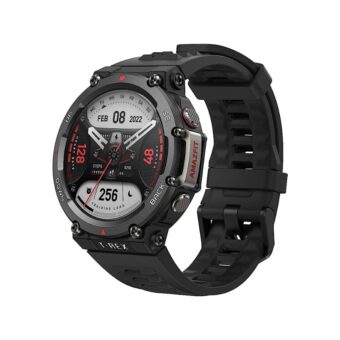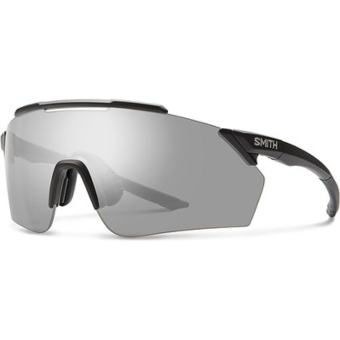Table of Contents
- 1. Introduction: Importance of Accurate Heart Rate Monitoring
- 2. How Heart Rate Monitors Work:
- – Technology Behind Wrist-Based Monitors
- 3. Accuracy Comparison:
- 4. Comfort and Convenience:
- 5. Battery Life and Maintenance:
- 6. Cost and Accessibility:
- 7. Ideal Use Cases:
- 8. Conclusion: Choosing the Right Device for You
1. Introduction: Importance of Accurate Heart Rate Monitoring
In an era where fitness and health have become paramount, accurate heart rate monitoring isn’t just a luxury—it’s a necessity. Precision in tracking your heart rate can mean the difference between optimizing your workout and ineffectively straining your body. Accurate data helps you stay within the ideal training zones, maximizing fat burn or enhancing cardiovascular strength, depending on your goals. More than just numbers, these insights allow you to fine-tune every workout session with scientific precision.
Beyond fitness optimization, accurate heart rate monitoring plays a crucial role in overall health management. For individuals managing chronic conditions like hypertension or arrhythmias, understanding their real-time cardiovascular status is essential for effective treatment and lifestyle adjustments. Advanced monitors offer personalized feedback that far surpasses generic advice, empowering users to take proactive measures based on concrete data rather than estimates or assumptions. In this light, choosing between chest strap vs wrist-based monitors becomes not merely a question of comfort but one of critical importance for both immediate performance benefits and long-term well-being.
2. How Heart Rate Monitors Work:
– Technology Behind Chest Straps
The technology that powers chest straps is a fascinating blend of precision and innovation, designed to offer unparalleled accuracy in heart rate monitoring. At the core of these devices are electrodes that sit close to the skin, capturing electrical signals directly from your heart. This method leverages electrocardiography (ECG) technology, which is considered the gold standard for measuring heart activity. Unlike optical sensors found on wrist-based monitors— which can be affected by skin pigmentation, tattoos, or ambient light conditions— chest straps deliver consistently reliable data regardless of external factors.
One unique feature often overlooked is how chest straps’ direct contact mechanism allows for real-time performance metrics without any significant lag. This is particularly beneficial for high-intensity athletes who rely on immediate feedback to optimize their training sessions effectively. Additionally, modern chest straps boast advanced connectivity options like Bluetooth and ANT+, allowing seamless integration with a range of fitness apps and devices. These functionalities elevate mere data collection into actionable insights, making chest straps indispensable tools for anyone serious about their fitness journey.
– Technology Behind Wrist-Based Monitors
When you glance at the sleek design of wrist-based heart rate monitors, you might not immediately realize the sophisticated technology working just beneath the surface. Optical heart rate sensors, often using photoplethysmography (PPG), are key to their function. This technology involves emitting light into your skin and measuring variations in light absorption as blood flows through your capillaries. Constantly capturing these minute changes, wrist-based monitors can provide real-time feedback on your heart’s activity with remarkable accuracy.
One particularly captivating aspect is how this technology aligns with advanced algorithms to filter out noise from physical movement or external lighting conditions. These smart algorithms enhance reliability and ensure that what shows up on your device isn’t just a random fluctuation, but a precise measurement of your cardiac rhythm. Additionally, many of these devices incorporate accelerometers and gyroscopes to analyze motion patterns, further refining the data captured by the optical sensors. It’s cutting-edge tech making everyday health insights more accessible and actionable than ever before.
3. Accuracy Comparison:
– Precision of Chest Straps
When it comes to the accuracy of heart rate monitoring, chest straps are often heralded as the gold standard. Their precision stems from their positioning and technology—placed directly on the chest where they can pick up electrical signals from the heart. This direct measure of electrical activity enables a level of reliability that wrist-based monitors struggle to replicate, especially during high-intensity workouts or in conditions with less ideal external factors like excessive sweat.
Moreover, chest straps excel in providing nearly real-time data which can be crucial for athletes who need immediate feedback on their training intensity. Unlike optical sensors used in wrist-based devices that can lag slightly and may suffer inaccuracies due to arm movement or poor fit, a well-secured chest strap remains steadfastly accurate regardless of motion artifacts. This makes them indispensable for those serious about fine-tuning their training regimen and ensuring each beat counts toward optimal performance.
– Reliability of Wrist-Based Devices
Wrist-based heart rate monitors have revolutionized convenience, making it incredibly easy to track your stats during a workout or even in everyday life. However, the reliability of these devices can vary significantly based on several factors. For instance, their accuracy may degrade when engaging in high-intensity activities where wrist movement is substantial. The optical sensors often struggle to maintain consistent contact with the skin, leading to sporadic data readings that could disrupt your fitness tracking and health insights.
Moreover, factors such as skin tone, tattoos, and even ambient light can affect how accurately these wrist-based monitors function. In less controlled environments or under extreme conditions, you might find discrepancies between the readings from a wrist-based device and those from a chest strap monitor—known for its precise electrocardiogram (ECG) measurements. While advancements continue to improve wrist-worn technology’s performance, users aiming for peak accuracy often lean towards chest straps for critical training sessions or medical needs.
4. Comfort and Convenience:
– Wearing Experience: Chest Straps
When it comes to the wearing experience, chest straps have often been met with mixed reviews but offer unique benefits that can’t be overlooked. The snug fit of a chest strap provides extraordinarily consistent data as it sits close to the heart, making them the gold standard for accurate heart rate monitoring. However, this precision comes at a cost; some users find them cumbersome or uncomfortable during prolonged activities. The tightness required to maintain contact can sometimes lead to chafing or irritation, particularly for those participating in high-intensity workouts or endurance sports.
Despite these drawbacks, many athletes swear by chest straps because of their reliability and detailed metrics. For instance, they excel in capturing rapid fluctuations in heart rate — invaluable for interval training where real-time feedback is crucial for optimizing performance. Additionally, advancements in material science have led to more ergonomic designs and hypoallergenic materials that minimize discomfort. Users who prioritize data accuracy above all else will find that no wrist-based monitor currently matches the fidelity of a chest strap, making it an indispensable tool for serious training regimens and competition prep.
– User-Friendliness: Wrist Monitors
When it comes to user-friendliness, wrist-based heart rate monitors often have the upper hand due to their seamless integration into everyday life. Unlike chest straps that can feel cumbersome and intrusive, wrist monitors are designed with convenience in mind. You simply strap one on like a watch and you’re ready to go, whether you’re hitting the gym or just going about your day. This ease of use eliminates any barriers to consistent tracking, making it an ideal choice for someone who values simplicity without compromising on accuracy.
Moreover, modern wrist monitors come loaded with smart features that cater to both casual users and fitness enthusiasts alike. Imagine receiving real-time feedback directly on your wrist—whether it’s a gentle nudge towards your targeted heart rate zone or a notification about completing those elusive 10,000 steps. These interactive elements not only make fitness monitoring more intuitive but also help in setting and achieving personalized health goals. Whether you’re looking for motivation or real-time data at a glance, the user-friendly interface of wrist monitors provides an unparalleled experience that integrates effortlessly into daily routines.
5. Battery Life and Maintenance:
– Longevity of Chest Strap Batteries
When it comes to longevity, chest strap heart rate monitors shine primarily due to their replaceable batteries. Unlike many wrist-based options that require frequent recharging or complete device replacement once the battery wears out, chest straps often use CR2032 coin cell batteries. These small powerhouses can last anywhere from six months to a year with regular use, depending on the brand and specific usage patterns.
Beyond just longevity, the convenience of these replaceable batteries plays a crucial role in maintaining consistent performance. A simple battery swap ensures your monitor is always ready for action without downtime for charging—unlike wrist-worn devices that might leave you stranded in the middle of a workout once they deplete. This straightforward approach provides athletes an assurance of reliability and uninterrupted monitoring over extended periods, giving it a distinct edge when it comes to both performance sustainability and user convenience.
– Charging Needs for Wrist Monitors
When it comes to charging needs, wrist-based heart rate monitors offer a modern twist on convenience. Unlike chest straps that often require replaceable batteries, many wrist monitors come equipped with rechargeable lithium-ion batteries. This seamless integration means you can power up your device simply by connecting it to a USB port or using wireless charging pads—eliminating the constant need for buying and disposing of batteries.
Beyond ease of charging, the battery life of wrist-based monitors is also impressive. Some models boast longevity ranging from multiple days to even weeks on a single charge. Paired with energy-efficient sensors and smart notifications that alert you before the battery runs out, these devices ensure you stay connected and monitored without frequent interruptions. It’s this combination of advanced technology and user-friendly features that make wrist monitors an increasingly appealing choice for fitness enthusiasts and athletes alike.
6. Cost and Accessibility:
– Price Range for Chest Straps
Diving into the price range for chest straps, you’ll find that these heart rate monitors span a broad spectrum. Budget-friendly options can start as low as $40, providing accurate data without breaking the bank. These entry-level models typically offer essential features such as real-time heart rate monitoring and basic compatibility with fitness apps, making them an excellent choice for casual athletes looking to get started.
On the other end of the scale, high-end chest straps can reach upwards of $200 or more. These advanced devices are often packed with sophisticated technology like ECG readings, Bluetooth and ANT+ connectivity, and enhanced metrics on things like heart rate variability (HRV), offering insights into your stress levels and recovery state. For serious athletes or data enthusiasts who thrive on detailed analytics to fine-tune their training programs, investing in a premium model could be worth every penny.
However, it’s crucial not just to look at the price tag but also at how it aligns with your specific needs and goals. While spending more generally gets you upgraded features and potentially better durability, less expensive models might suffice if you’re simply seeking basic metrics for everyday workouts.
– Affordability of Wrist-Based Options
When it comes to affordability, wrist-based heart rate monitors generally hold a significant edge over their chest strap counterparts. These wearable devices are not only convenient but also often come at a fraction of the cost. Major brands like Fitbit and Garmin offer a range of models aimed at different price points, ensuring that even budget-conscious consumers have access to reliable heart rate tracking without breaking the bank.
The affordability of wrist-based options does not necessarily mean a compromise on quality or features. Many modern wrist-based monitors include additional functionalities such as sleep tracking, step counting, and GPS, making them versatile fitness companions for everyday use. Moreover, with advancements in optical sensor technology (PPG), the accuracy gap between chest straps and wrist-based devices is steadily closing, providing users with an increasingly cost-effective yet reliable means to monitor their cardiovascular health.
7. Ideal Use Cases:
– Best Scenarios for Chest Straps
Picture this: It’s race day, and you’re lined up at the start of your first marathon. The energy is electric, and your nerves are buzzing. At moments like these, a chest strap heart rate monitor truly shines. Unlike wrist-based monitors that can sometimes lag during bursts of high intensity or sudden changes in pace, chest straps offer impeccable real-time tracking. This accuracy is paramount for long-distance runners or cyclists who need precise data to optimize their performance on-the-fly.
In another scenario, imagine you’re deep into a HIIT (High-Intensity Interval Training) session where every second counts. With rapid shifts between intense effort and brief recovery periods, knowing exactly when you’ve reached optimal intensity can make all the difference in achieving better results while avoiding overtraining. Here again, chest straps outperform wrist-based models by staying firmly in place despite vigorous movements—ensuring reliable heart rate measurements without needing constant adjustments.
These scenarios illustrate how chest straps are a cut above when unwavering precision is critical. By providing consistent and accurate readings even in the most demanding circumstances, they empower athletes to push boundaries safely and effectively. While wrist-based monitors have their convenience perks for everyday activities, it’s under pressure that chest straps undeniably prove their mettle.
– When to Choose Wrist Monitors
Choosing wrist monitors can be an excellent decision for those who prioritize convenience and all-day wearability without compromising too much on accuracy. While chest straps are renowned for their precise data, wrist-based monitors combine heart rate tracking with various smart features, making them perfect for multi-taskers juggling health monitoring with lifestyle needs. Whether you’re a busy professional who wants discreet updates or someone new to fitness looking for a user-friendly option, wrist monitors offer flexibility that fits seamlessly into daily living.
Furthermore, advancements in optical heart rate technology have made modern wrist monitors remarkably reliable during most forms of exercise. They shine particularly during steady-state activities like walking or running at a consistent pace. However, it’s worth noting that if your workouts are typically high-intensity or involve rapid changes in movement — think HIIT sessions or competitive sports — the slight trade-off in accuracy might warrant consideration of how critical pinpoint precision is to your training goals. Nonetheless, the blend of practicality and progressive tech makes wrist-based devices a compelling choice for many fitness enthusiasts and casual users alike.
8. Conclusion: Choosing the Right Device for You
Choosing the right device ultimately hinges on your specific fitness goals, personal preferences, and lifestyle needs. If you’re an endurance athlete or someone who values pinpoint precision for training regimens, a chest strap can offer unparalleled accuracy. These devices are ideal for activities where every beat counts—think marathon running or high-intensity interval training (HIIT). Their ability to measure heart rate variability makes them indispensable for serious athletes looking to fine-tune their performance.
On the other hand, wrist-based monitors offer convenience and versatility that fits seamlessly into everyday life. Whether you’re going for a casual jog or need to keep tabs on your daily activity levels with minimal hassle, these units excel in user-friendliness. Many modern wrist-based devices come packed with additional features like GPS tracking, sleep monitoring, and even smart notifications from your phone, making them an appealing multi-functional choice. By weighing these factors against each other based on what resonates most with your individual requirements, you’ll be better positioned to make an informed decision that enhances both your fitness journey and overall well-being.
















yv03x2